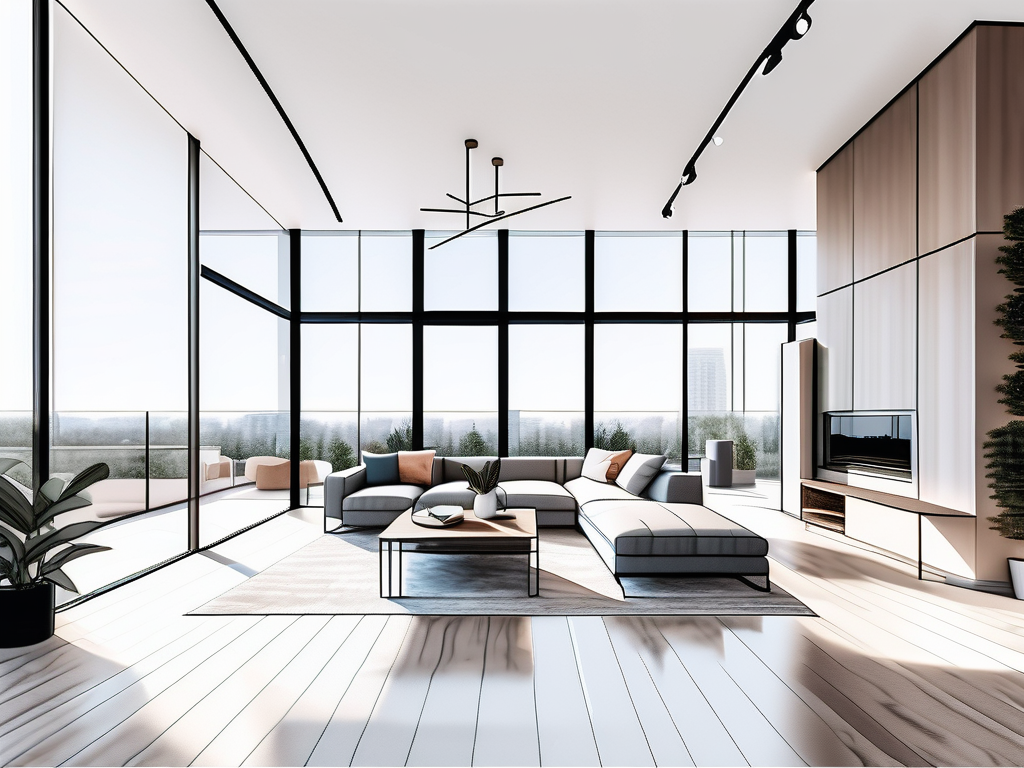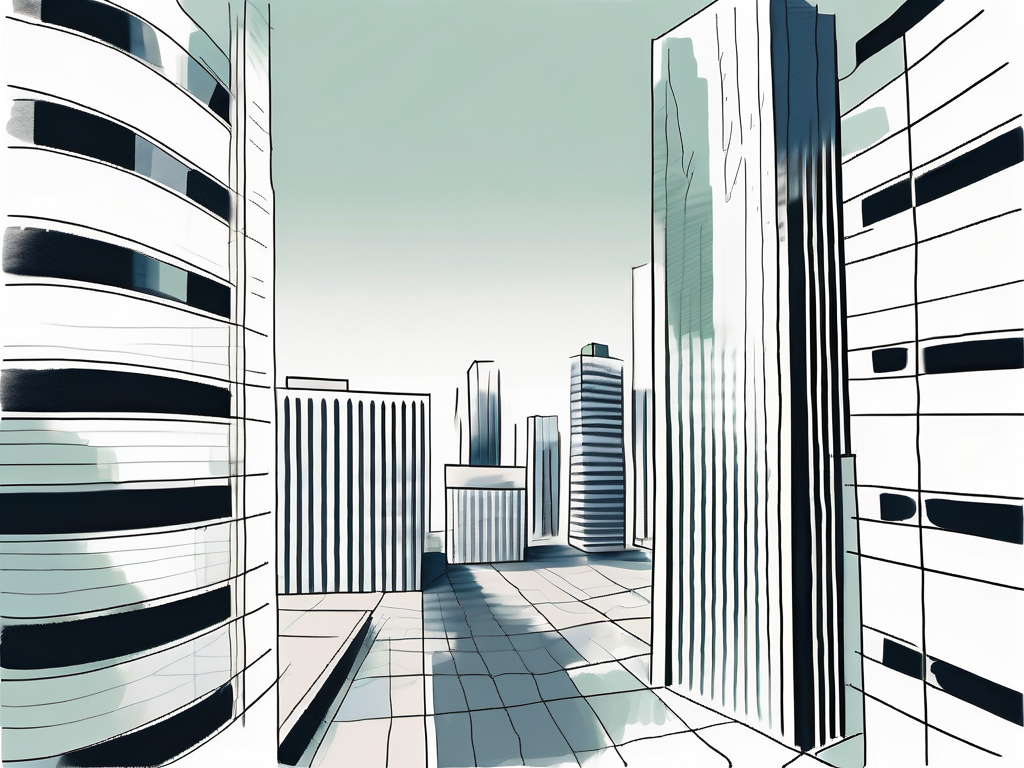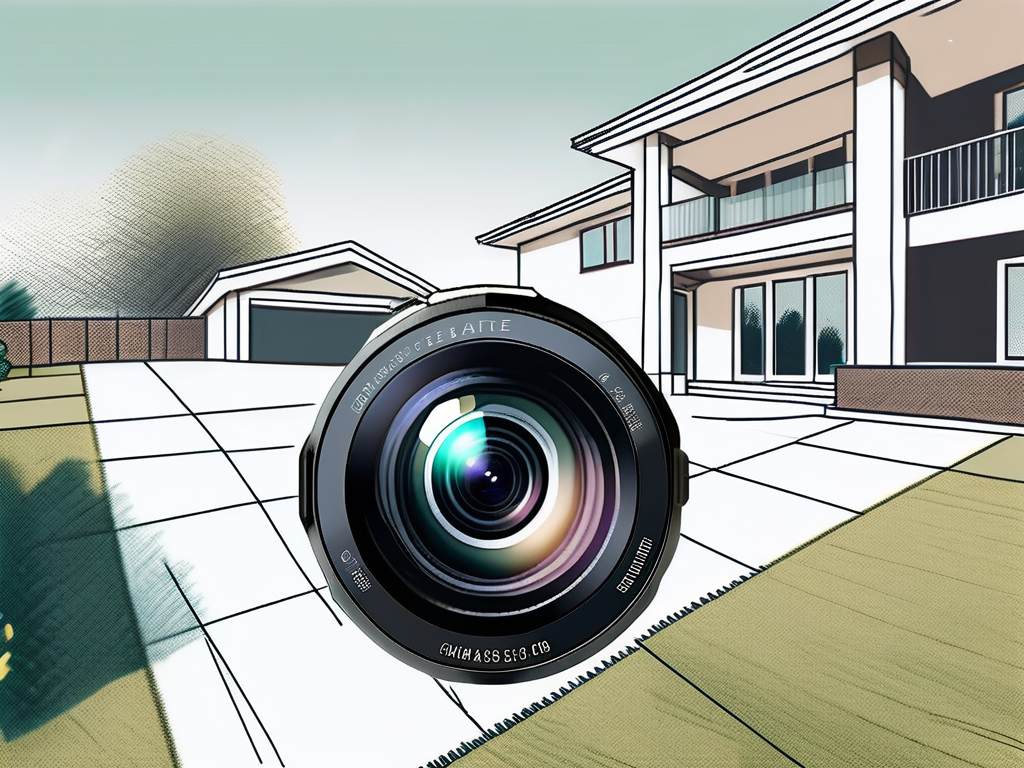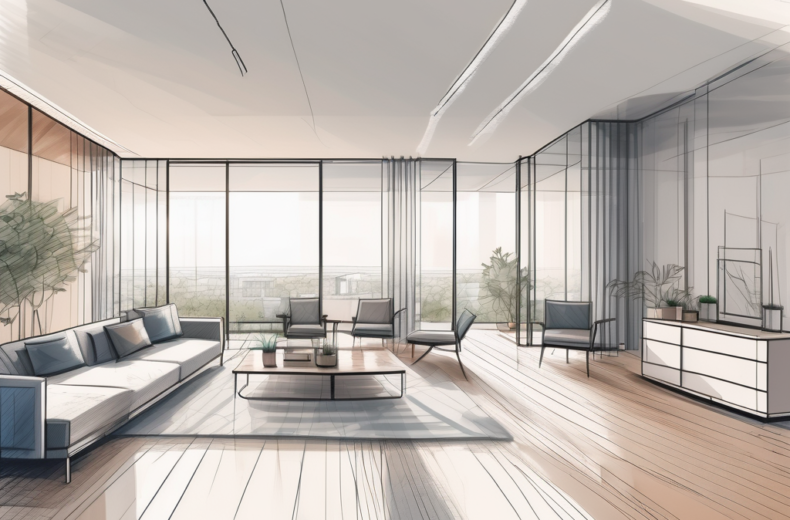In the realm of real estate photography, the wide-angle lens is a crucial tool. It is a type of lens that allows photographers to capture a larger field of view than standard lenses, making it ideal for shooting interior and exterior property shots. The use of wide-angle lenses can make rooms appear larger, capture impressive exterior shots, and provide a comprehensive view of the property.
However, using a wide-angle lens effectively requires a deep understanding of its characteristics, advantages, and potential drawbacks. This article aims to provide a comprehensive glossary of wide-angle lenses in the context of real estate photography, covering everything from the basic definition to advanced techniques and best practices.
Definition of Wide-Angle Lenses
Wide-angle lenses are a type of camera lens known for their ability to capture a wider field of view than a standard lens. They are characterized by a shorter focal length, usually less than 35mm on a full-frame camera. This shorter focal length results in a broader perspective, allowing photographers to include more of a scene in a single shot.
Wide-angle lenses come in two types: prime and zoom. Prime wide-angle lenses have a fixed focal length, while zoom wide-angle lenses allow you to adjust the focal length within a certain range. Both types have their advantages and disadvantages, which we will explore in later sections.
Characteristics of Wide-Angle Lenses
Wide-angle lenses have several unique characteristics that set them apart from other types of lenses. One of the most notable is their ability to exaggerate perspective. This means that objects closer to the lens appear much larger than those further away, creating a sense of depth and space. This characteristic is particularly useful in real estate photography, where creating a sense of spaciousness is often desirable.
Another characteristic of wide-angle lenses is their wide depth of field. This means that a larger portion of the scene will be in focus, from the foreground to the background. This is particularly useful in real estate photography, where it’s important to have as much of the property in focus as possible.
Advantages of Using Wide-Angle Lenses in Real Estate Photography
Wide-angle lenses offer several advantages in real estate photography. Firstly, their ability to capture a wider field of view makes them ideal for photographing interiors. They can make small rooms appear larger and more spacious, and they can capture the entirety of large rooms or outdoor spaces in a single shot.

Secondly, the wide depth of field of wide-angle lenses ensures that the entire property, from the foreground to the background, is in sharp focus. This allows potential buyers to see every detail of the property clearly. Lastly, the exaggerated perspective of wide-angle lenses can be used creatively to highlight certain features of the property, such as a large backyard or a grand entrance.
Choosing the Right Wide-Angle Lens for Real Estate Photography
Choosing the right wide-angle lens for real estate photography depends on several factors, including the type of property you’re photographing, the lighting conditions, and your personal style as a photographer. In general, a lens with a focal length of between 16mm and 24mm is considered ideal for real estate photography.
When choosing a wide-angle lens, it’s also important to consider the distortion that these lenses can cause. While some distortion can be corrected in post-processing, it’s generally best to choose a lens that minimizes distortion as much as possible. High-quality wide-angle lenses are designed to reduce distortion, ensuring that straight lines appear straight in your photos.
Disadvantages and Challenges of Using Wide-Angle Lenses in Real Estate Photography
While wide-angle lenses offer many advantages in real estate photography, they also present certain challenges. One of the main challenges is managing the distortion that these lenses can cause. While this distortion can be used creatively to exaggerate perspective and create a sense of space, it can also make rooms appear unnaturally large or distort the proportions of the property.

Another challenge of using wide-angle lenses in real estate photography is managing the lighting. Because these lenses capture a wider field of view, they often include more of the light sources in the scene, which can lead to overexposure or glare. It’s important to understand how to manage the lighting when using a wide-angle lens to ensure that your photos are properly exposed.
Overcoming the Challenges of Using Wide-Angle Lenses
There are several strategies for overcoming the challenges of using wide-angle lenses in real estate photography. One of the most effective is learning how to use manual settings on your camera. By adjusting the aperture, shutter speed, and ISO, you can control the exposure and depth of field of your photos, ensuring that they are properly exposed and in focus.
Another strategy is learning how to use post-processing software to correct distortion and manage lighting. Software like Adobe Lightroom and Photoshop offer tools for correcting distortion, adjusting exposure, and enhancing the overall quality of your photos. By mastering these tools, you can overcome many of the challenges of using wide-angle lenses in real estate photography.
Best Practices for Using Wide-Angle Lenses in Real Estate Photography
There are several best practices for using wide-angle lenses in real estate photography. One of the most important is to always be aware of the distortion that these lenses can cause. To minimize distortion, try to keep the camera level and avoid tilting it up or down. Also, try to keep important features of the property away from the edges of the frame, where distortion is most noticeable.

Another best practice is to use a tripod whenever possible. Because wide-angle lenses capture a wider field of view, any camera shake will be more noticeable in your photos. Using a tripod ensures that your photos are sharp and clear, even at slower shutter speeds.
Post-Processing Techniques for Wide-Angle Real Estate Photos
Post-processing is an important part of real estate photography, especially when using wide-angle lenses. One of the most common post-processing techniques is correcting distortion. Most post-processing software offers tools for correcting both perspective distortion (caused by tilting the camera up or down) and barrel distortion (caused by the wide-angle lens itself).
Another important post-processing technique is adjusting the exposure. Because wide-angle lenses capture a wider field of view, they often include more of the light sources in the scene, which can lead to overexposure. By adjusting the exposure in post-processing, you can ensure that all parts of the scene are properly exposed.
Conclusion
Wide-angle lenses are a powerful tool in real estate photography, allowing photographers to capture a wider field of view and create a sense of space and depth. However, using these lenses effectively requires a deep understanding of their characteristics, advantages, and potential drawbacks.
By understanding the principles outlined in this glossary, you can use wide-angle lenses to capture stunning real estate photos that truly showcase the beauty and potential of a property. Whether you’re a seasoned professional or a beginner just starting out, mastering the use of wide-angle lenses is a crucial step in your real estate photography journey.
Last modified: April 3, 2024


 Claire Wright, a savvy tech nerd and self-taught photographer who lives in Seattle and working at one of the best real estate photography companies called HD Estates.
Claire Wright, a savvy tech nerd and self-taught photographer who lives in Seattle and working at one of the best real estate photography companies called HD Estates.
